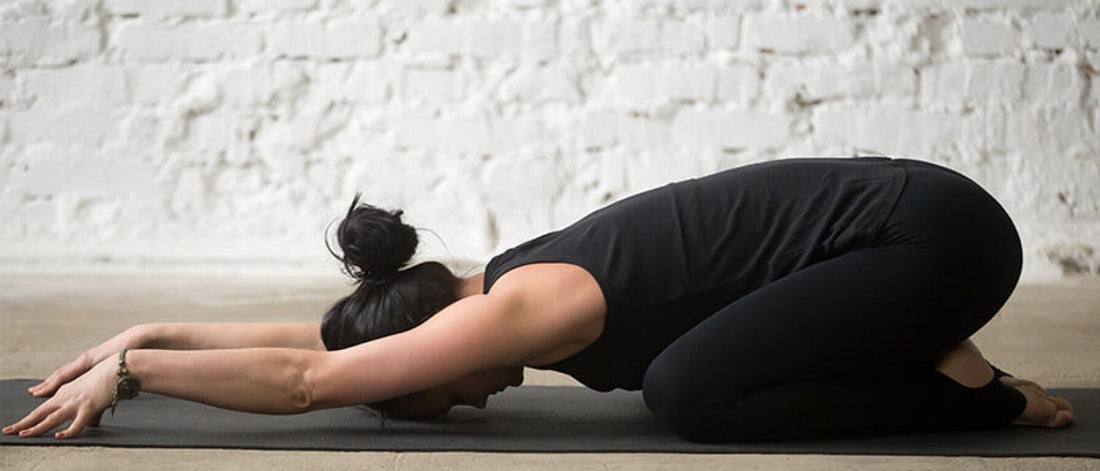Many individuals recovering from addiction feel they’ve lost touch with how their minds and bodies feel, because addiction serves as a way to numb and disconnect you from your mind and body.
Many studies have observed the effect of yoga and meditation on the fight-or-flight response, which is the body’s natural reaction to stressful and life-threatening situations. While this response is a survival mechanism, intended to save you from immediate physical danger (such as being attacked by a wild animal), it can also be experienced when you encounter physical stress, such as toxic relationships, or the hardships of entering recovery.
Chronic stress and consistently elevated cortisol levels (your primary stress hormone) are a major underlying cause of most Western illnesses and diseases if left undealt with. In the short-term, elevated cortisol levels can contribute to panic attacks, difficulty sleeping, and feelings of anxiety and depression.
Now, here’s where the benefits of yoga and meditation come in: When you practice these two techniques on a regular basis, your cortisol levels naturally decrease. This gives your body a chance to return to homeostasis, or balance, and you experience a state called restful awareness.
Restful awareness allows your body to heal, and the physical impact of the fight-or-flight response—such as elevated blood pressure, suppressed immunity, and an increased heart rate—begin to normalize. In other words, restful awareness is a state where your mind and body can begin to heal.
Here are a few forms of meditation to choose from:
1. Guided meditations. These are often taught in yoga classes during a period of rest while gazing meditations encourage you to keep your eyes open and focus on a single object, such as a candle flame or image. You can also listen to our guided meditations for visualizing positive outcomes in your life, or consciously reducing your stress levels and entering a deep state of relaxation.
2. Body relaxation scans. Body relaxation scans help calm your physiology and bring awareness to different parts of your body, which can help improve your self-awareness.
3. Nature walks. Walking silently in nature is a form of meditation.
4. Primordial Sound Meditation. This is the form of meditation we use in our recovery programs at the Chopra Addiction and Wellness Center, which encourages individuals to sit with their eyes closed and focus on a sound or mantra in order to pull their minds away from thoughts and quiet the mind.
The reason why meditation is one of the most useful tools in recovery (and for relapse prevention) is because it can help you detach from thoughts and impulses that may increase cravings for certain substances. In fact, meditation teaches that the desire for an addictive substance or behavior is only a thought, and you are not under any obligation to act or respond to the thoughts that enter your mind. Instead, you can bring awareness to your breath, and simply allow these thoughts to pass rather than react to them. At first, this can seem difficult, but it’s called a meditation practice because it gets easier as this becomes part of your daily routine.
For many people, in the beginning of recovery, it can seem impossible to sit calmly and still. In this case, it’s better to start your meditation practice with movement, such as a walking meditation, or even yoga, which can be considered a moving meditation when you focus on the awareness of your breathe as you move through the poses.
Now, as a spiritual and physical practice, yoga can also help increase strength and improve flexibility. Like meditation, yoga can also help reduce the stress response, which helps lower your heart rate and blood pressure, reduce cortisol levels and feelings of depression and anxiety.
Now, there are yoga practitioners in the media all the time, who are able to twist their bodies into incredible postures and demonstrate remarkable flexibility. It’s important to understand that this isn’t necessary to receive the benefits of yoga poses, and this kind of flexibility is the result of several years of consistent daily practice.
You can experience the mind-body benefits of yoga immediately, as you practice the postures. Let’s take a quick look at the benefits you’ll receive from some basic poses (which you can even do in the comfort of your own home):
Get personalized instruction in invaluable practices like yoga and meditation to help you heal from addiction at the Chopra Addiction and Wellness Center. Learn More.
Many studies have observed the effect of yoga and meditation on the fight-or-flight response, which is the body’s natural reaction to stressful and life-threatening situations. While this response is a survival mechanism, intended to save you from immediate physical danger (such as being attacked by a wild animal), it can also be experienced when you encounter physical stress, such as toxic relationships, or the hardships of entering recovery.
Chronic stress and consistently elevated cortisol levels (your primary stress hormone) are a major underlying cause of most Western illnesses and diseases if left undealt with. In the short-term, elevated cortisol levels can contribute to panic attacks, difficulty sleeping, and feelings of anxiety and depression.
Now, here’s where the benefits of yoga and meditation come in: When you practice these two techniques on a regular basis, your cortisol levels naturally decrease. This gives your body a chance to return to homeostasis, or balance, and you experience a state called restful awareness.
Restful awareness allows your body to heal, and the physical impact of the fight-or-flight response—such as elevated blood pressure, suppressed immunity, and an increased heart rate—begin to normalize. In other words, restful awareness is a state where your mind and body can begin to heal.
How to Practice Meditation in Recovery
Let’s start with meditation in recovery. There are many forms of meditation you can practice to pull your mind away from thoughts that may distract you, upset you, or cause you anxiety, and help you reach a state of inner peace and calm. All forms of meditation are beneficial for slowing down an overactive mind, but you may find one style in particular that resonates with you best.Here are a few forms of meditation to choose from:
1. Guided meditations. These are often taught in yoga classes during a period of rest while gazing meditations encourage you to keep your eyes open and focus on a single object, such as a candle flame or image. You can also listen to our guided meditations for visualizing positive outcomes in your life, or consciously reducing your stress levels and entering a deep state of relaxation.
2. Body relaxation scans. Body relaxation scans help calm your physiology and bring awareness to different parts of your body, which can help improve your self-awareness.
3. Nature walks. Walking silently in nature is a form of meditation.
4. Primordial Sound Meditation. This is the form of meditation we use in our recovery programs at the Chopra Addiction and Wellness Center, which encourages individuals to sit with their eyes closed and focus on a sound or mantra in order to pull their minds away from thoughts and quiet the mind.
The reason why meditation is one of the most useful tools in recovery (and for relapse prevention) is because it can help you detach from thoughts and impulses that may increase cravings for certain substances. In fact, meditation teaches that the desire for an addictive substance or behavior is only a thought, and you are not under any obligation to act or respond to the thoughts that enter your mind. Instead, you can bring awareness to your breath, and simply allow these thoughts to pass rather than react to them. At first, this can seem difficult, but it’s called a meditation practice because it gets easier as this becomes part of your daily routine.
For many people, in the beginning of recovery, it can seem impossible to sit calmly and still. In this case, it’s better to start your meditation practice with movement, such as a walking meditation, or even yoga, which can be considered a moving meditation when you focus on the awareness of your breathe as you move through the poses.
Yoga: The Other Important Tool in Recovery
Yoga poses can also help you deal with stress, and bring a sense of balance into your daily life. The word “Yoga” means to unite, and can strengthen the connection between your mind, body, and spirit. As covered above, this unity is often disconnected when individuals first enter recovery because addiction tends to numb thoughts, feelings, and mind-body awareness.Now, as a spiritual and physical practice, yoga can also help increase strength and improve flexibility. Like meditation, yoga can also help reduce the stress response, which helps lower your heart rate and blood pressure, reduce cortisol levels and feelings of depression and anxiety.
Now, there are yoga practitioners in the media all the time, who are able to twist their bodies into incredible postures and demonstrate remarkable flexibility. It’s important to understand that this isn’t necessary to receive the benefits of yoga poses, and this kind of flexibility is the result of several years of consistent daily practice.
You can experience the mind-body benefits of yoga immediately, as you practice the postures. Let’s take a quick look at the benefits you’ll receive from some basic poses (which you can even do in the comfort of your own home):
Benefits of Basic Yoga Poses
1. Child’s Pose (Balasana)- Stretches hips, thighs, and ankles
- Reduces stress and fatigue
- Relaxes front-body muscles
- Stretches back muscles
- Calms brain and helps relieve stress and mild depression
- Relaxes the body
- Reduces headache, fatigue, and insomnia
- Helps to lower blood pressure
- Stretches spine
- Stretches quadriceps
- Brings deep relaxation to the body and mind
- Stimulates abdominal organs
- Stimulates the heart and improves general circulation
- Stretches the inner thighs, groins, and knees.
- Helps relieve the symptoms of stress and mild depression
- Stretches muscles in shoulders, chest, and abdomen
- Strengthens back
- Increases flexibility
- Elevates mood
- Invigorates the heart
Get personalized instruction in invaluable practices like yoga and meditation to help you heal from addiction at the Chopra Addiction and Wellness Center. Learn More.






















